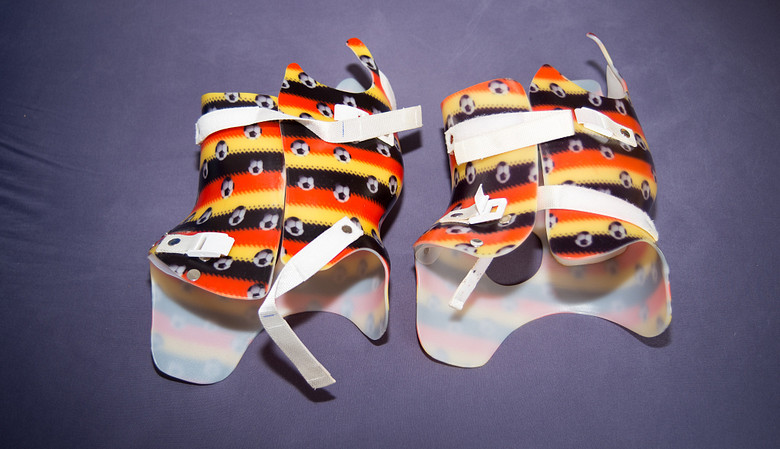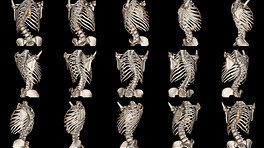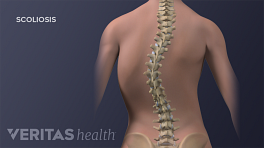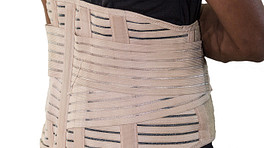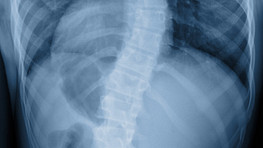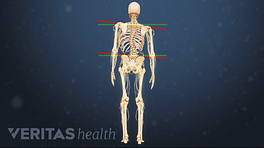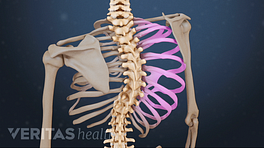Some teens completely refuse to wear a rigid brace to treat scoliosis, perhaps fearing comments or jokes made by peers, or simply believing that the treatment is not worth the hassle. In other cases, a teen may seem willing to wear the brace, but does not meet the prescribed hours per day because of too many breaks from wearing it or not wearing it tightly enough.
A back brace is effective in maintaining and controlling Cobb angle for scoliosis.
Regardless of why a teen does not wear the brace as prescribed, it is an issue that needs to be addressed before the scoliosis has a chance to worsen and possibly require major surgery.
In This Article:
- Adolescent Idiopathic Scoliosis and Emotional Health
- How to Spot Depression in an Adolescent with Scoliosis
- When a Teen with Scoliosis Won’t Wear a Back Brace
- Long-Term Outlook for Adolescents Who Have Scoliosis Surgery
- Idiopathic Scoliosis Video
Tips to Convince a Teen to Stick with Bracing
If a teen is reluctant to wear a brace for scoliosis, it is important to learn why. Give the teen an opportunity to talk about how he or she feels about the brace. Once the main concerns are stated, it becomes easier to work together to find solutions.
For example, if an adolescent expresses frustration with picking clothes to wear with the brace, go online together and see if other adolescents with scoliosis have listed advice.
Other tips include:
- Acknowledge the temporary inconvenience. The brace does take extra time and energy to put on, other people will have comments or questions, and it will feel uncomfortable—especially in the beginning.
- Explain why bracing works. Scientific studies continue to show that the more hours per day that are spent in a properly fitting brace, the less likely the scoliosis curve will progress to the point of needing surgery. 1 Weinstein SL, Dolan LA, Wright JG, Dobbs MB. Effects of bracing in adolescents with idiopathic scoliosis. N Engl J Med. 2013; 369:1512-1521. A rigid (not soft) brace works by applying pressure to the growing spine in a manner that reduces the chances of the curve worsening during the growth spurt.
- Get family and friends to offer support. A teen is more likely to wear a brace if parents and friends are supportive. In particular, if a parent is against the idea of bracing, the child is less likely to wear the brace as prescribed. Sometimes it makes sense to convince the parent(s) that bracing is the correct treatment option before the adolescent will agree to it.
- Check to see if a nighttime brace is an option. While some studies suggest that more time spent in the brace lowers the risk for curve progression, other studies have suggested that nighttime braces (only worn while sleeping for at least 8 hours per night) can also be successful for some scoliosis patients. This solution could potentially help the patient avoid wearing the brace during the day, but it depends on the type of scoliosis curve. 2 Lateur G, Grobost P, Gerbelot J, Eid A, Griffet J, Courvoisier A. Efficacy of nighttime brace in preventing progression of idiopathic scoliosis of less than 25°. Orthop Traumatol Surg Res. 2017;103(2):275-278. , 3 Lee CS, Hwang CJ, Kim DJ, et al. Effectiveness of the Charleston night-time bending brace in the treatment of adolescent idiopathic scoliosis. J Pediatr Orthop. 2012; 32(4): 368-72.
- Explore availability of brace sensors. Studies have shown that when electronic sensors are used to track brace compliance and adolescents are counseled about the results by their doctor, they are more likely to wear the brace for the prescribed hours per day. 4 Karol LA, Virostek D, Felton K, Wheeler L. Effect of compliance counseling on brace use and success in patients with adolescent idiopathic scoliosis. J Bone Joint Surg Am. 2016; 98(1):9-14. These sensors can be especially helpful in identifying when the patient is taking too many breaks from the brace or not wearing it tightly enough. Some sensors are heat sensitive while others are pressure sensitive.
Ultimately, the choice to wear the brace as prescribed by the doctor is up to the adolescent. Listening to his or her concerns and working together on solutions may offer the best chance to get the adolescent to agree to bracing.
What About Alternatives to Bracing for Scoliosis?
Sometimes if the patient or parents are against the idea of treating scoliosis with a rigid brace, they will seek out other treatment options. Below are some examples:
- Soft braces. These braces, also called dynamic braces, consist of somewhat flexible straps that crisscross the torso and connect to a base worn around the pelvis. However, the science to support the use of soft braces is not as strong as for rigid braces. 1 Weinstein SL, Dolan LA, Wright JG, Dobbs MB. Effects of bracing in adolescents with idiopathic scoliosis. N Engl J Med. 2013; 369:1512-1521. Also, unlike a rigid brace, a soft brace (partially worn beneath the pants) must be removed before using the bathroom.
- Exercises. There are some cases in the medical literature where physiotherapeutic scoliosis-specific exercises (PSSE)—which target specific muscles surrounding the spine for strengthening and stretching—have reduced a scoliosis curve’s size. However, the scientific evidence has been relatively weak thus far. While exercise is a good idea to help complement the use of a rigid brace, it is not advised as a replacement for bracing. 5 SRS statement on physiotherapy scoliosis specific exercises. Scoliosis Research Society Web site. Published 2014. Accessed March 20, 2017.
- Surgery. Some teens want to skip bracing and go directly to having surgery. This preference fails to consider that scoliosis surgery is major surgery with potentially serious risks. Typically, a scoliosis curve needs to get to 45 or 50 degrees before the surgery’s potential benefits outweigh the potential complications.
Currently, rigid bracing is the only nonsurgical treatment for idiopathic scoliosis that has strong scientific evidence for preventing curves from worsening and reducing the chance of needing major surgery. 1 Weinstein SL, Dolan LA, Wright JG, Dobbs MB. Effects of bracing in adolescents with idiopathic scoliosis. N Engl J Med. 2013; 369:1512-1521.
- 1 Weinstein SL, Dolan LA, Wright JG, Dobbs MB. Effects of bracing in adolescents with idiopathic scoliosis. N Engl J Med. 2013; 369:1512-1521.
- 2 Lateur G, Grobost P, Gerbelot J, Eid A, Griffet J, Courvoisier A. Efficacy of nighttime brace in preventing progression of idiopathic scoliosis of less than 25°. Orthop Traumatol Surg Res. 2017;103(2):275-278.
- 3 Lee CS, Hwang CJ, Kim DJ, et al. Effectiveness of the Charleston night-time bending brace in the treatment of adolescent idiopathic scoliosis. J Pediatr Orthop. 2012; 32(4): 368-72.
- 4 Karol LA, Virostek D, Felton K, Wheeler L. Effect of compliance counseling on brace use and success in patients with adolescent idiopathic scoliosis. J Bone Joint Surg Am. 2016; 98(1):9-14.
- 5 SRS statement on physiotherapy scoliosis specific exercises. Scoliosis Research Society Web site. Published 2014. Accessed March 20, 2017.
